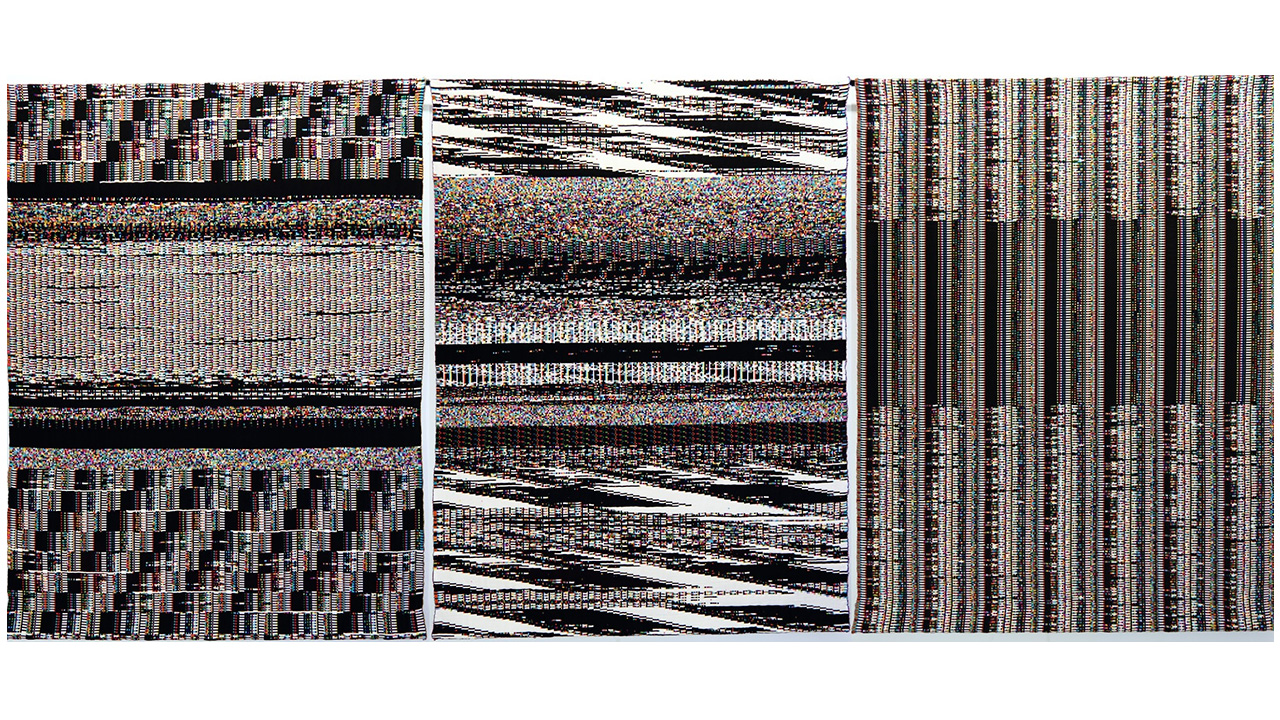In medieval times tapestries were used to commemorate epic battles, document family histories, and even immortalise heroes. These days, artists like Phillip Stearns use them as a physical representations of the digital bits and bytes flowing through our electronic hardware.
The last time we checked in with Stearns he had created a series of Glitch Textile blankets made with patterns derived from corrupted digital images. The results were, not surprisingly, completely random, but in a beautiful way. And now Stearns is taking inspiration from the highly structured way his computer stores raw binary data in memory to create a series of tapestries designed for more modern castles.
It’s also fitting that Stearns’ digital tapestry designs are created on large, computer-controlled looms these days. It’s almost like the digital equivalent of Escher’s self-portrait. [Phillip Stearns – Fragmented Memory via MoCo Loco]

